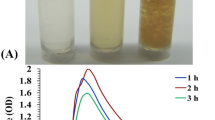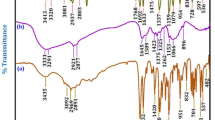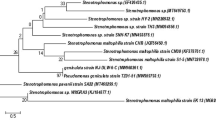Abstract
THE presence of chitin in the above-mentioned organ has been indicated so far by means of colour reactions only, probably owing to the laek of material. During the course of another investigation, we came into the possession of 650 mandibles (1 gm.), and an acetolytic breakdown experiment was carried out. After boiling with dilute alkali and hydrochloric acid, the remainder weighed 70 mgm., and yielded upon the application of Bergmann's method 8 mgm. of colourless needles which were identical with octa-acetyl chitobiose: m.p. 290°, nitrogen content 4·4 per cent. The experiment shows that the presence of chitin can be proved in even minute amounts of natural substances.
This is a preview of subscription content, access via your institution
Access options
Subscribe to this journal
Receive 51 print issues and online access
$199.00 per year
only $3.90 per issue
Buy this article
- Purchase on SpringerLink
- Instant access to full article PDF
Prices may be subject to local taxes which are calculated during checkout
Similar content being viewed by others
Author information
Authors and Affiliations
Rights and permissions
About this article
Cite this article
TÓTH, G., ZECHMEISTER, L. Chitin Content of the Mandible of the Snail (Helix pomatia). Nature 144, 1049 (1939). https://doi.org/10.1038/1441049c0
Issue date:
DOI: https://doi.org/10.1038/1441049c0
This article is cited by
-
Historical review on chitin and chitosan biopolymers
Environmental Chemistry Letters (2019)



